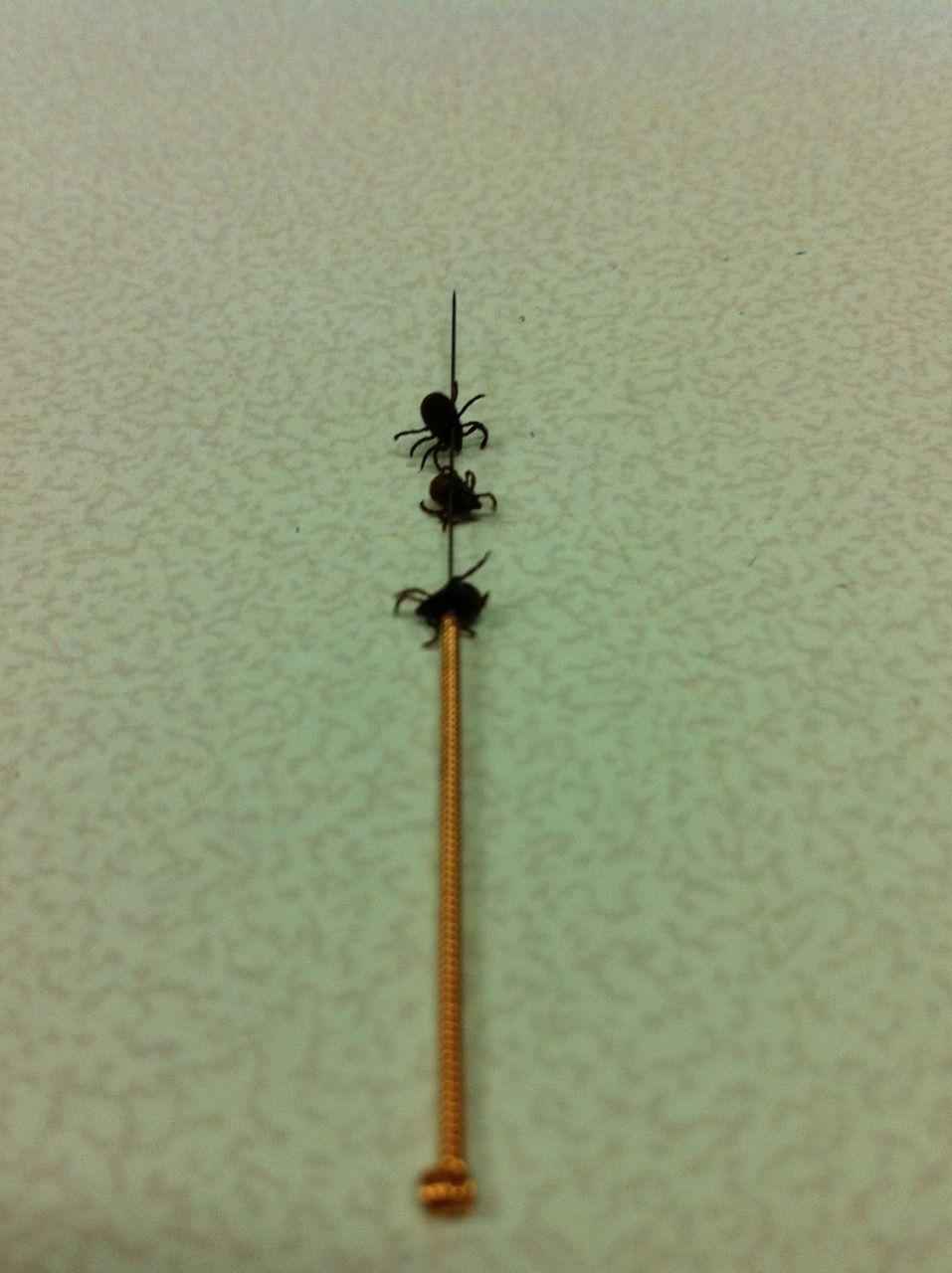Lyme disease is a condition that can cause serious illness and even death for humans, dogs, and other animals. Incidents of the disease are growing. It has only been noted in the United States since 1975. For people with pets that are active outdoors, it is important to understand what Lyme disease is and what to look for. Unlike infected humans, dogs generally may not show visible signs of infection. As a result, it can be hard to tell if your pet has come into contact with the bacteria that causes the disease. Learning about Lyme disease can help keep you and your pet safe and healthy.
What Is Lyme Disease?
Lyme disease is caused by the bacterium Borrellia burgdorferi. The bacterium enters the body by way of deer ticks. The tick attaches to the body of a dog or person and begins to feed. If the tick goes unnoticed and remains attached to the host, it can release B. burgdorferi into the bloodstream of the person or dog it is feeding on. The longer the tick feeds, usually more than 12 hours, the greater the chances are of infection.
- Lyme Disease in California - Topics include the life cycle of ticks, definition of Lyme disease, Lyme disease manifestation, treatment, prevention, and Lyme disease in pets.
- Fast Facts Lyme Disease - PDF fact sheet about Lyme disease: what it is, who is affected by it, how you can get it, and how to prevent it.
- What is Lyme Disease - A brief but to the point explanation of what Lyme disease is and how it is transmitted.
 Lyme Disease Statistics
Lyme Disease Statistics
According to the Centers for Disease Control (CDC), Lyme disease is reported more than any other arthropod-transmitted or vector-borne disease in the U.S. The majority of these cases, up to 94 percent, came from Connecticut, New Jersey, Delaware, New Hampshire, Maine, New York, Maryland, Pennsylvania, Massachusetts, Virginia, Minnesota, and Wisconsin. In 2010, there were nearly 25,000 confirmed cases of the disease, although the addition of probable cases raises the number to 30,000. This is lower than the previous three years where the number of cases had nearly reached as high as 40,000 in 2009.
- Lyme Disease Data - Statistics from the CDC about Lyme disease including cases by state and cases per year.
- The National Lyme Disease Memorial Park Project - National statistics on Lyme disease. Includes a lengthy list of other tick borne diseases.
Dogs and Lyme Disease
Like humans, dogs are susceptible to Lyme disease when they are in areas where there are deer ticks. This can be in the backyard, depending on where you live, or it can be during an outdoor excursion such as a camping or hiking trip. It can be difficult to tell if your dog has a tick. While we might feel discomfort where the tick has latched on or notice a rash, dogs typically will not exhibit these signs. For this reason, owners are often taken by surprise when their dog falls ill and is diagnosed with Lyme disease.
- MSPCA Angell Lyme Disease in Dogs - Angell Animal Medical Center discusses Lyme disease and dogs. The article explains what Lyme disease is, how animals get it, and what to do if you spot a tick on your pet.
- Ticks and Lyme Disease in Dogs - This WebMD article discusses various aspects of Lyme disease in relation to dogs. The article explains how dogs get it, what dogs are susceptible to it, signs and complications, and what should be done to remove ticks and treat the disease.
- An Overview of Lyme Disease in Dogs - Cornell University College of Veterinary Medicine’s explanation of Lyme disease in dogs, with info on transmission, prevention, diagnosis, and treatment.
Prevention Tips
Fortunately, Lyme disease is preventable if you take the appropriate precautions to protect yourself and your pet. When living in a highly wooded area, make your yard as inhospitable to deer ticks as possible. This means keeping the yard and any area where the dog might wander as clean as possible. Chipmunks, mice, and other animals that primarily serve as hosts to deer ticks will be less likely to enter the area. Simple steps include cleaning up any weeds or litter on the property and maintaining the lawn. Another step is to plant foliage that is not attractive to deer and keep trees and bushes trimmed. Any piles of wood should be kept away from the house, as should bird feeders containing seed that will attract squirrels.
Keeping your dog on your property is also important. Never allow your dog to wander off your property, particularly into nearby wooded areas. Be wary when walking your dog and keep away from shrubs and other leafy areas. If you go on regular hiking or camping trips, ask your veterinarian about a vaccine against Lyme disease. Every time your dog goes into a wooded area, it is important to check thoroughly for the presence of ticks. One way to do this is to comb through your dog’s fur, against the grain, so that the skin beneath is visible. After a bath is the perfect time to check. If you find a tick, remove it immediately.
- Be Tick Free: A Guide for Preventing Lyme Disease - This New York State Department of Health page includes a list of tips to prevent dogs from contacting ticks and getting Lyme disease.
- Your Pet and Lyme Disease - Washington State University reviews Lyme disease and prevention, symptoms, and treatment.
 Removing Ticks From Your Pet
Removing Ticks From Your Pet
Removing a tick from a dog is the same as removing a pet tick from a person.. This will require the use of a pair of tweezers, or fingers if they are properly protected with gloves or a tissue. Grasp the tick as close to the dog's skin as possible, taking care not to squeeze or crush it. Pull it straight up and out from the skin, using a steady motion. Twisting or yanking out the tick can cause it to release the bacterium, or mouth parts may break off and remain imbedded in the skin. If this should occur, the parts must be removed. If you can’t get a good grip on the tick with the tweezers, take your dog to the vet. Once the tick has been removed, clean the skin where the tick was embedded and save the tick just in case your dog becomes ill. Saving the tick in an airtight container will allow the vet to check the tick for possible communicable diseases.
- Urban Integrated Pest Management - An article on Lyme disease and the removal of ticks.
- How to Remove a Tick - A video on the University of Rhode Island Tick Encounter Resource Center website that provides instruction on how to remove ticks. The instructions are also written alongside the video.
- How to Remove a Tick From Your Pet - The ASPCA gives instruction on how to remove ticks from a pet in 7 steps.
Signs, Symptoms, and Treatment
When a dog does show symptoms of Lyme disease, it can be as much as five months after infection. By this time the dog may be lethargic, have a high temperature, swelling in the joints, and a lack of interest in eating. In some cases, a dog may suffer from kidney disease and kidney failure. These problems are generally when you’ll notice something is wrong and prompts you to take your pet to the veterinarian.
In order to make a diagnosis of Lyme disease, the vet will test the dog's blood for antibodies against B. burgdorferi. The presence of these antibodies will suggest that the dog has either been exposed to the bacteria that causes Lyme disease or that the dog has Lyme disease. To confirm the diagnosis, the dog will need to have been in an area with ticks, started developing some of the symptoms, and responded quickly to
antibiotic treatment. The antibiotic therapy used to treat Lyme disease lasts from as few as 14 days to as many as 30. In most cases, dogs will recover after the treatment, but occasionally the antibiotic treatment may need to be extended beyond 30 days. In some cases, a dog may never fully rid itself of B. burgdorferi and may continue experiencing joint pain or other symptoms that require treatment. This is particularly true if the dog has had Lyme disease for some time before receiving treatment.
Lyme Disease - PDF from Swan Corner Animal Hospital with the signs and symptoms to look out for and an explanation of how Lyme disease is diagnosed and treated.


